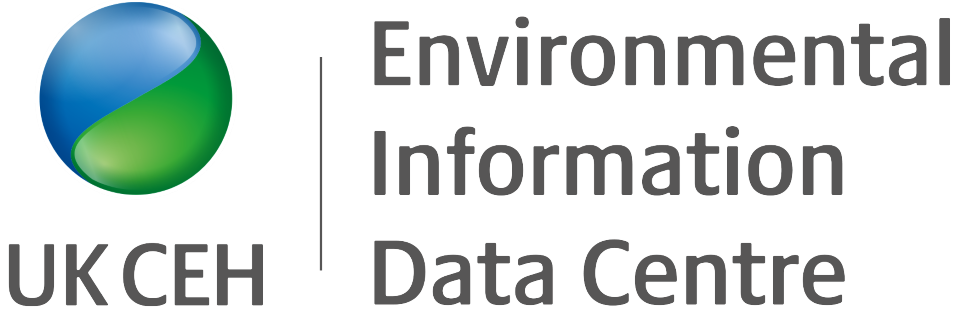
These data are held and managed by the Environmental Information Data Centre
For more details and to access the data, go to https://catalogue.ceh.ac.uk/id/8dc7c876-90ca-4886-bd0a-9b3a99b09f64
For more details and to access the data, go to https://catalogue.ceh.ac.uk/id/8dc7c876-90ca-4886-bd0a-9b3a99b09f64
Source apportionment of annual nutrient and sediment loads to rivers in England and Wales, from the SEPARATE framework
Download/Access
PLEASE NOTE:
By accessing or using this dataset, you agree to the terms of the relevant licence agreement(s). You will ensure that this dataset is cited in any publication that describes research in which the data have been used.
This dataset is made available under the terms of the Open Government Licence 
Estimates of discharged loads of nitrogen, phosphorous and fine-grained sediments to rivers in England and Wales from multiple sector sources, reported at Water Framework Directive catchment scale, from the SEctor Pollutant AppoRtionment for the AquaTic Environment (SEPARATE) modelling framework [1].
The SEPARATE framework integrates information on pollutant emissions from multiple sources to provide apportionment and summarises these estimates on the basis of the WFD cycle 2 waterbodies for England and Wales.
The estimated loads are expressed as tonnes per year. Sources are both diffuse and point sources. Diffuse sources include agriculture, urban, river channel banks, atmospheric deposition; point sources include sewage treatment works, septic tanks, combined sewer overflows, storm tanks. The pollutant loads and percentages are given as cumulative values with the values from the upstream catchment. Phosphorous is reported both as dissolved phosphorous and total phosphorous.
[1] Zhang, Y.; Collins, A.L.; Murdoch, N.; Lee, D.; Naden, P.S. (2014) Cross sector contributions to river pollution in England and Wales: Updating waterbody scale information to support policy delivery for the Water Framework Directive. Environmental Science & Policy, 42, pp 16-32. doi:10.1016/j.envsci.2014.04.010
The SEPARATE framework integrates information on pollutant emissions from multiple sources to provide apportionment and summarises these estimates on the basis of the WFD cycle 2 waterbodies for England and Wales.
The estimated loads are expressed as tonnes per year. Sources are both diffuse and point sources. Diffuse sources include agriculture, urban, river channel banks, atmospheric deposition; point sources include sewage treatment works, septic tanks, combined sewer overflows, storm tanks. The pollutant loads and percentages are given as cumulative values with the values from the upstream catchment. Phosphorous is reported both as dissolved phosphorous and total phosphorous.
[1] Zhang, Y.; Collins, A.L.; Murdoch, N.; Lee, D.; Naden, P.S. (2014) Cross sector contributions to river pollution in England and Wales: Updating waterbody scale information to support policy delivery for the Water Framework Directive. Environmental Science & Policy, 42, pp 16-32. doi:10.1016/j.envsci.2014.04.010
Publication date: 2016-06-01
Format
Comma-separated values (CSV)
Spatial information
Study area
Spatial representation type
Tabular (text)
Spatial reference system
OSGB 1936 / British National Grid
Provenance & quality
This dataset is from the SEPARATE framework, which is based upon data from the period spanning from 2010 to 2012. Main input datasets include: 2010 June Agricultural Survey, 2010 British Survey of Fertiliser Practice (BSFP), elevation data, soil classification, meteorological data, river flow data, and river network outline. Further information given in [1].
Although the pollutant emissions are summarised by WFD cycle 2 catchment, the results for individual waterbodies with areas <25 km2 should be treated with caution. This amounts to approximately 43% of the waterbodies across England and Wales and primarily reflects issues associated with the accuracy of statistical or regionally averaged data used to drive the emission layers including those for the agricultural sector.
[1] Zhang, Y.; Collins, A.L.; Murdoch, N.; Lee, D.; Naden, P.S. (2014) Cross sector contributions to river pollution in England and Wales: Updating waterbody scale information to support policy delivery for the Water Framework Directive. Environmental Science & Policy, 42, pp 16-32. doi:10.1016/j.envsci.2014.04.010
Although the pollutant emissions are summarised by WFD cycle 2 catchment, the results for individual waterbodies with areas <25 km2 should be treated with caution. This amounts to approximately 43% of the waterbodies across England and Wales and primarily reflects issues associated with the accuracy of statistical or regionally averaged data used to drive the emission layers including those for the agricultural sector.
[1] Zhang, Y.; Collins, A.L.; Murdoch, N.; Lee, D.; Naden, P.S. (2014) Cross sector contributions to river pollution in England and Wales: Updating waterbody scale information to support policy delivery for the Water Framework Directive. Environmental Science & Policy, 42, pp 16-32. doi:10.1016/j.envsci.2014.04.010
Licensing and constraints
This dataset is made available under the terms of the Open Government Licence 
Supplemental information
Zhang, Y.; Collins, A.L.; Murdoch, N.; Lee, D.; Naden, P.S. (2014) Cross sector contributions to river pollution in England and Wales: Updating waterbody scale information to support policy delivery for the Water Framework Directive. Environmental Science & Policy, 42, pp 16-32.
Correspondence/contact details
Other contacts
Custodian
NERC EDS Environmental Information Data Centre
info@eidc.ac.uk
Publisher
NERC Environmental Information Data Centre
info@eidc.ac.uk
Originator
